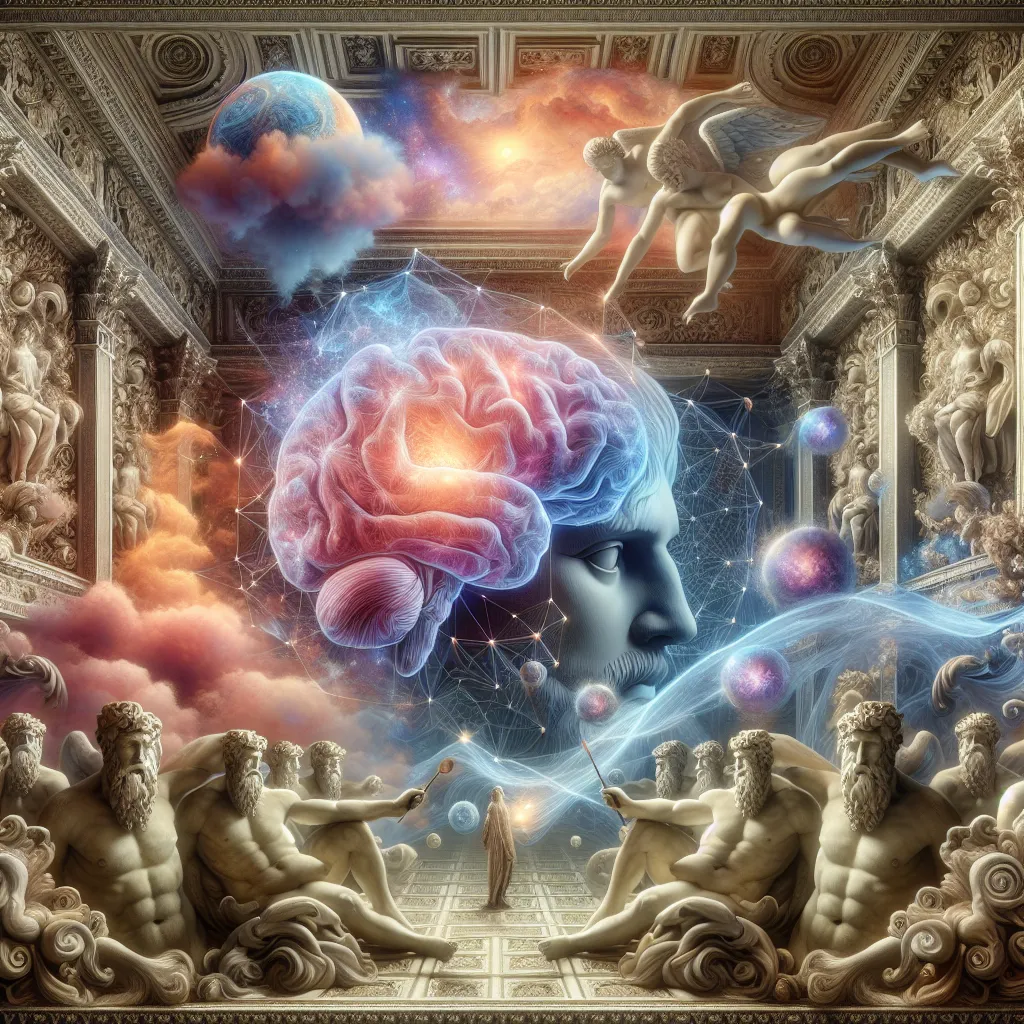
- Published on
- Authors

- Name
- You
The Neuroscience of Dreaming: How the Brain Creates the Dreamworld
Greetings, fellow traveler of the dreamscape! Today, we shall embark on a journey through the seamless blend of mysticism and cutting-edge neuroscience. By the conclusion of this article, you’ll gain a deeper understanding of how our brains conjure the magical realms we wander through each night.
Understanding the Dream Mechanisms
At the heart of our nightly adventures lies a dazzling interaction of neurons, neurotransmitters, and brain structures. These form the fertile soil from which dreams sprout.
Key Brain Structures
| Structure | Function |
|---|---|
| Pons | Initiates REM sleep; sends signals to the thalamus and cortex |
| Thalamus | Relays information from the brainstem to the cerebral cortex |
| Cerebral Cortex | Interprets neural signals; constructs the sensory experience |
| Amygdala | Adds emotional content to dreams |
| Hippocampus | Integrates memories into dreams |
Sleep cycles between REM (Rapid Eye Movement) and non-REM stages, with REM being the stage most associated with vivid dreaming.
The Neuroscience of the Dream State
Neurons and Neurotransmitters
Just as an artist’s brush depends on paints of varying hues, our dreams are painted by an orchestra of neurotransmitters.
- Acetylcholine sparks visual and emotional intensity in dreams.
- Noradrenaline is nearly paused, offering a calm backdrop for reduced-memory consolidation.
- Serotonin waxes and wanes, shifting the mood and dynamics of dreaming.
The REM Sleep Symphony
The Pons triggers REM sleep, releasing a cascade of brain activity. REM sleep is characterized by:
- Rapid eye movements that signify neural activity in the visual cortex.
- Muscle atonia, or temporary paralysis, to keep our bodies still while our minds meander.
- Elevated brain activity similar to when we’re awake, a startling feature contrasting how deeply we are actually asleep.
During REM, the Amygdala enriches our dreams with emotional depth, while the Cerebral Cortex knits these visions into a coherent narrative.
Diagram of the Sleep Cycle:
graph TD
S0[Awake] --> S1[Stage 1: Light Sleep]
S1 --> S2[Stage 2: Transition]
S2 --> S3[Stage 3: Deep Sleep]
S3 --> REM[[REM: Dreaming]]
REM --> S1
---
## Mystical Encounters in Neurology
From a shamanistic perspective, dreams are often viewed as gateways to other realms, places where the soul can communicate with other beings or receive wisdom from the higher self. But what happens when we look deeper?
### The Pineal Gland: The Mind’s Eye
Revered in many cultures, the **Pineal Gland**—often dubbed the “third eye”—regulates melatonin but also is thought to serve as a bridge between the physical and mystical planes. Shamans and oracles through centuries have felt that this small, esoteric gland is crucial to our perception of the unseen.
### Collective Consciousness
Reinhabit the wisdom of the ages as you realize that dreaming allows us to dip into the **Collective Unconscious**, a concept vividly described by Carl Jung. This vast, shared pool of archetypes and symbols is experienced when dreams transcend personal material to explore universal themes.
---
## Conclusion
The enchantment of dreams is spun using the raw threads of neurological processes, interwoven with the mystic's belief in transcendental journeys. As you next close your eyes and drift into the dreamworld, remember the delicate dance of science and spirit that crafts each scene.
Sweet dreams, cosmic explorer. 💤✨
---
Feel free to share your thoughts or personal dream experiences in the comments below!
---
